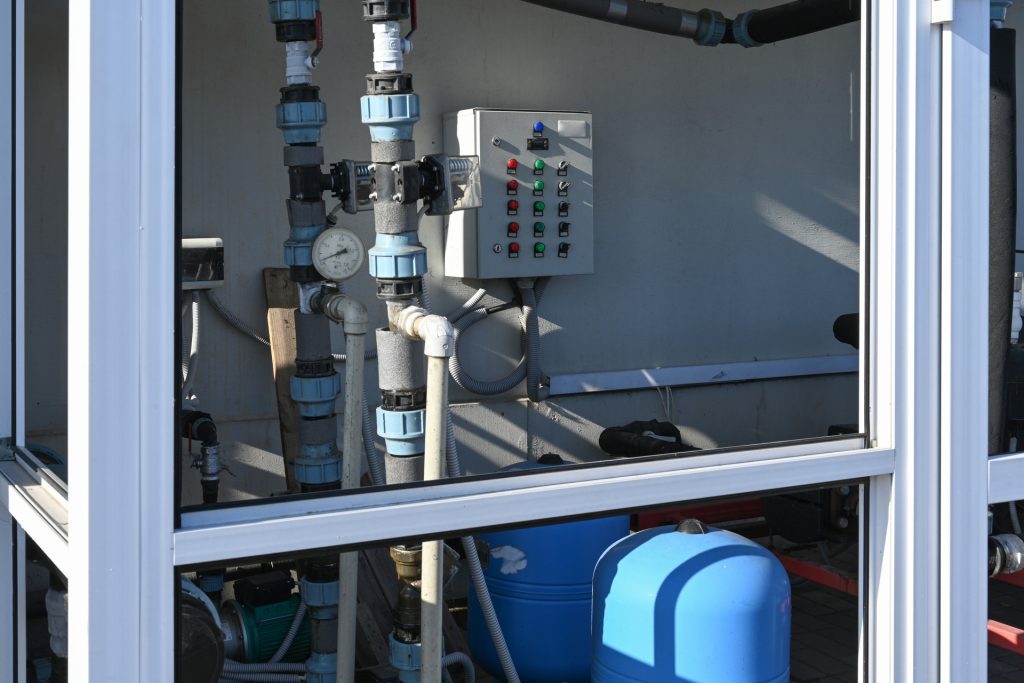
Numerous fluids always need to be moved from one place to another. In most establishments, the most commonly transferred fluids include those in liquid or gaseous form, and sometimes, both. There are many examples we can draw from that demonstrate that fluid transfer is part of everyday life. For instance, we must regularly move domestic waste from holding tanks to treatment and purification plants in our homes.
In chemical manufacturing plants, there’s always a need to safely transfer harmful gaseous emissions to prevent employee injury or environmental degradation. National and regional health departments also depend on fluid transfer as a critical element of public hygiene. For instance, during fall or seasons with excessive rains, there’s usually an urgent need to drain stormwater and any runoff waste to prevent flooding and contamination, especially in highly populated areas.
Different devices are used to move fluids, including pipes and pumps. However, pipes only differ in size, material, and, sometimes, length. With pumps, however, we find various technologies utilized to influence factors like suction height, pressure, and flow rate, among others.
Fluid Transfer Pumps
Pumps facilitate the movement of fluids from one point to another. For instance, you can use a pump to transfer crude raw materials in liquid from a storage tank to the factory’s processing unit. And today, there are many manufacturers of fluid transfer pumps, including KNF USA.
Next, we’ll briefly discuss the different types of fluid transfer technologies.
- Diaphragm Pump Technology
Pumps that utilize advanced diaphragm technology continue to revolutionize fluid transfer processes. Diaphragm pumps are also known as membrane pumps, and most utilize two flexible rubbers referred to as membranes/diaphragms to create the pumping action. The diaphragms engage in a back-and-forth movement creating a vacuum suction. This vacuum suction enables the pump to draw and discharge various fluids and substances.
There are various diaphragm pumps, including air-operated pumps, piston diaphragm pumps, and electric-driven pumps. Today we also have pulse-less diaphragm pumps designed to absorb most vibration or pulsating sounds, eliminating a lot of noise when a pump is working.
Diaphragm pumps are designed to move highly viscous liquids like runoff waste with a lot of sludge and thick fluids like water. They’re also used to move corrosive and non-corrosive fluids in numerous industries, including:
- Cosmetics and pharmaceuticals to move liquid soap, shampoo, and lotions.
- Chemical plants to move sanitary detergents, industrial raw materials, paints, and crude oil, among others.
- Food industries to move milk, fruit juice syrups, yogurt, and honey.
- In laboratories, they’re used to move gases and vapors.
Moreover, there are different fluid transfer pumps utilizing diaphragm technology, including:
- Piston Pumps

They’re also referred to as reciprocating positive displacement pumps. They use one or more pistons to draw fluid through an inlet valve into a sealed cylinder from which it is discharged through an outlet valve. Piston pumps are mainly used with materials that are often challenging to move from drums and other storage containers, including a wide range of inks and highly viscous fluids. In addition, the printing industry also uses piston pumps to move ink from a storage container to a printing machine.
- Solenoid Pumps
Manufacturing companies producing high-volume consumer goods depend on solenoid pumps to transfer fluid into a discharge line.
Solenoid pumps consist of electromagnetic coils and springs that push against the diaphragm when activated. This push against the diaphragm causes fluids to be displaced into the suction line. When the solenoid is deactivated, it retracts and moves the diaphragm, allowing fluid to move from the suction line into a chamber where it stays until it’s transferred to packaging containers.
Solenoid pumps are primarily used in beverage industries because of their capacity to increase fluid pressure and their repeatability aspect. Solenoid pumps also offer good suction, and their valves allow you to mix gases or liquids and dose and distribute various liquids.
- Smoothflow Pumps
These pumps produce a continuous flow of fluids with no pulsation and are compatible with most chemicals. Smoothflow pumps offer pulse-free fluid transfer at a constant rate. They are ideal for moving fluids in industries that require a metered discharge rate.
- Centrifugal Pumps
These pumps use an engine or electric motor to transfer momentum to fluids to move them from a lower to a higher-level area. Centrifugal pumps work by exerting outside pressure-centrifugal force- to induce fluid movement. Centrifugal pumps are used in various industries, including pharmaceuticals, chemicals, and paints.
- Peristaltic Pumps
Also known as roller pumps, peristaltic pumps are mechanical pumps that use rotors to induce fluid movement in a flexible pipe. They are ideal for use with highly sterile fluids or chemical applications, such as in medical surgeries, because fluids only come into contact with the hose area of the pump.
Final Word
Today, there are numerous advancements in fluid transfer technology. To help you narrow down your options and choose the best fluid transfer pump for your operations, you need to consider various factors, including the fluid type, viscosity, and desired flow rate. However, sourcing such equipment from reputable manufacturers is the most guaranteed path to acquiring the kind of pump that suits your requirements.




